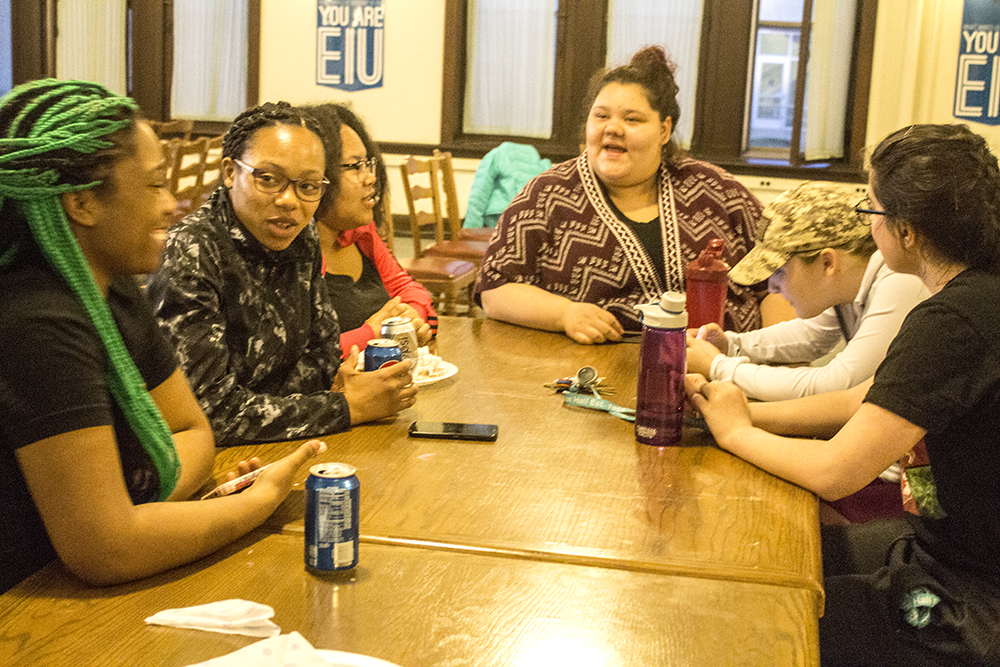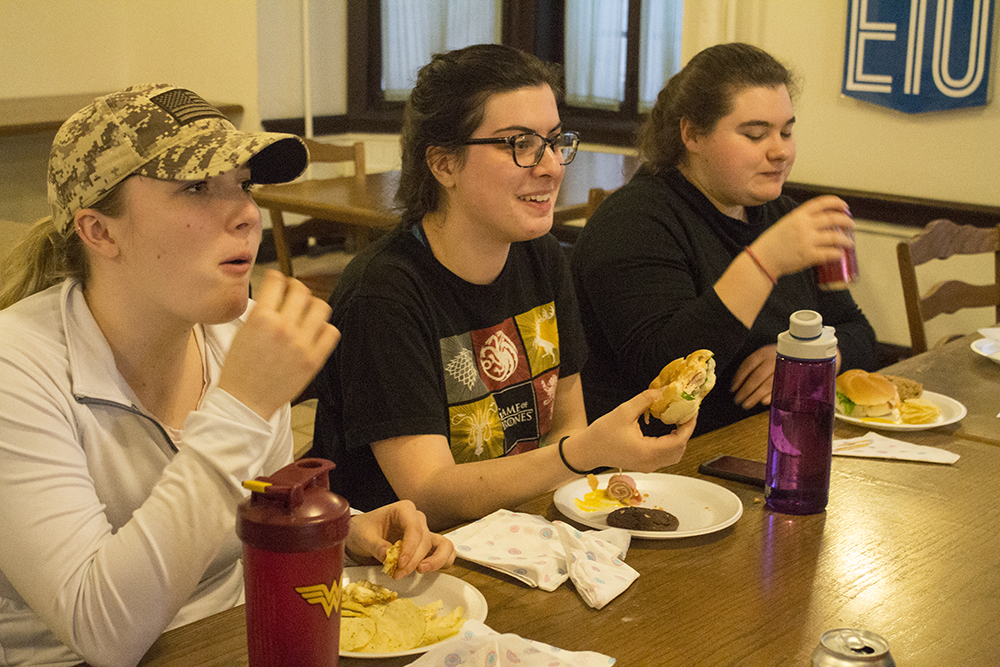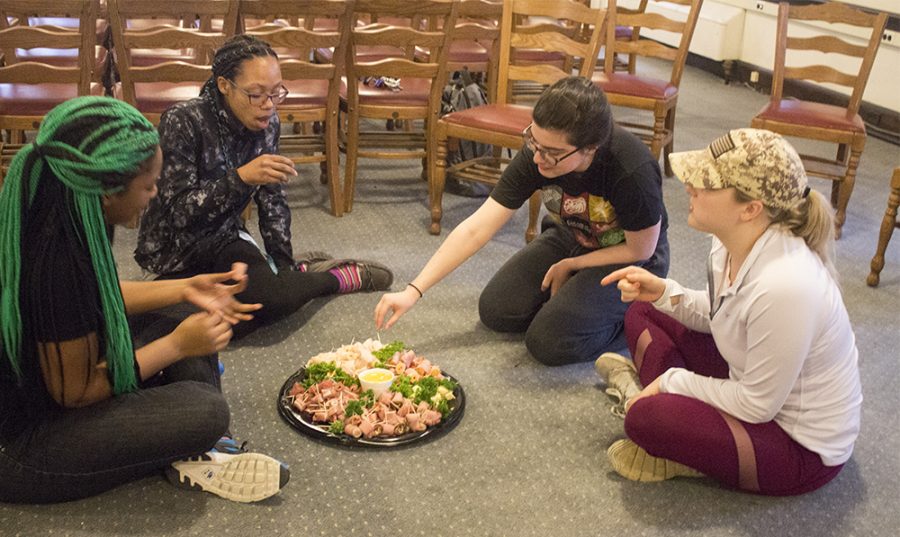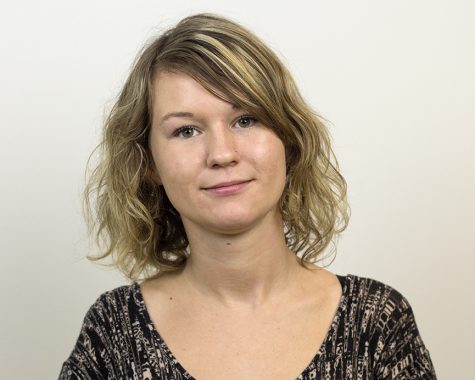‘Hunger Banquet’ shows disparity in world incomes
Students eat food on the floor during the “Hunger Banquet,” where they were placed in a group to demonstrate how the bottom 60 percent of the world might eat.
March 29, 2018
Students learned about different levels of hunger disparity through an interactive dining experience at the “Hunger Banquet” inside of Pemberton Hall on Wednesday evening.
Students were informed upon arrival that 1.3 billion people live in poverty around the world, while 850 million of them suffer from chronic hunger.
The Oxfam Banquet, a common college practice that is meant to raise awareness of hunger insecurity and how wasteful America is as a country, was the inspiration for the banquet.
Students were placed into different groups representing various income levels throughout the world.

Students socialize during the “Hunger Banquet,” a meal meant to demonstrate hunger disparity.
Kelsey Knopp, a sophomore special education major, was among those placed in the third group, which was supposed to represent the bottom 60 percent of the population who may make from $911 a year to $2.50 a day.
“I didn’t like the fact that I saw other people being served and I wasn’t served. It definitely opened my eyes to what it’s like not to be able to eat dinner like everyone else,” said Knopp, who consumed cheese and meat rolls on the floor using toothpicks for one portion of the night.
Erin Zurek, a freshman communication disorders and sciences major was placed in group two, which represents 25 percent of the population who may find it moderately easy to obtain food and may make between $912 and $9,075 a year.
Zurek said that this is the socioeconomic class she’s used to because she has to work to get food and people may take that for granted.
“We’re very fortunate that just about everyone here has come from somewhere where they haven’t had to struggle every day to get food, so it’s kind of out of sight, out of mind and then we see the problems other people have to face,” Zurek said.
Kayley LaGrou, a junior middle level education major, was placed into group one, which represented the top 15 percent of the population, with a per capita income of $9.076 thousand or more.
“It feels really unfair that I get to eat while other people aren’t,” said LaGrou as she enjoyed a turkey and cheese sandwich, chips and cookies that were delivered to her table.
Caroline Egan, a junior English major, said the presentation put hunger disparity into perspective for her.
“It was weird seeing everyone getting up and getting food and having to wait for mine. It didn’t feel good,” Egan said.

Kelsey Knopp, a sophomore special education major, Caroline Egan, a junior english major and Kayley LaGrou, a junior middle level education major dine on food during “The Hunger Banquet” inside of Permberton Hall on Wednesday evening.
Alyssa Jacobucci, a freshman music education major, said seeing other students with their sandwiches and sodas did not feel great.
“It’s a good representation because you’re sitting lower than everyone else and you’re able to see what (you) don’t have,” she said.
Milan Carter, a sophomore pre-med major, was among those in the third group who had to use toothpicks to eat cheese and meat rolls on the floor.
“It showed that they had more privilege than us. It was decent but I’d rather have a sandwich,” Carter said.
Carter said she and her sister work to fight against hunger disparity when they go out to eat in downtown Chicago, by taking their leftovers to people on the streets that need it.
“If people accept your leftovers, you know they’re really hungry,” she said.
Olivia Swenson-Hultz can be reached at 581-3213 or [email protected]
















































